ONKYO Liverpool, a great HI-FI in a small factor
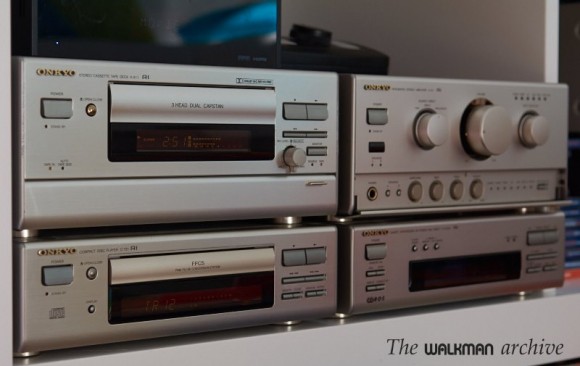
Since I was a teen I loved small HI-Fis. As many other teens, money didn’t let me go as far as to have a boombox (an excellent one, though). But I kept dreaming…
There are lots of choices if you search for a standard factor equipment, but very very few if you look for mini-sized ones. I’ve looked to all options in the best mini-combos from almost all brands: SONY, AIWA, PIONEER, KENWOOD, Technics.
The chance of a mini combo, like all those AIWAs full of lights and colors, was already discarded many years ago. Not only because they use integrated components, proprietary cables and a lot of plastic, but also because I don’t want an HI-FI that seems a discoteque or a spaceship. I simply don’t like them. I wanted something with an elegant design, well built and, more important, with excellent audio quality.
Some were pretty good (like top-end AIWA, SONY or Technics) but I finally went for an ONKYO LS-A5, back in 1997. It had separate modules but, sadly, interconnected with a proprietary cable. It was clearly better than the vast majority of those mini combos, the build quality was much better (100% metal, no plastic) and internally it uses discrete components, not integrated ones.
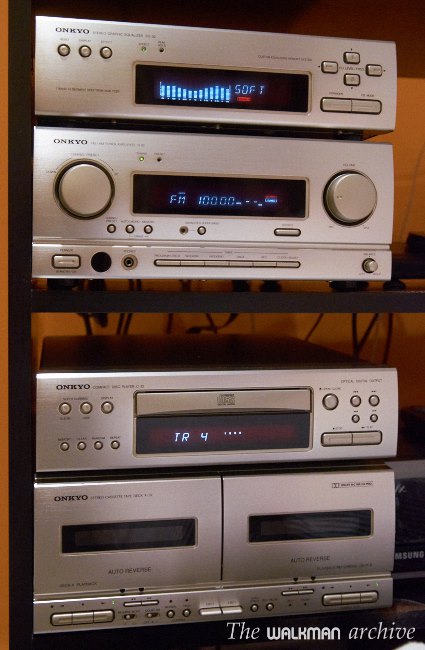
When my wife and I bought our flat at Barcelona in 2003, I still was searching for an excellent HI-FI for the living room… in a small factor. My wife don’t like big and tall stacks in her vision field… (I think you know what I mean…). Anyway, I always liked small HI-FIs.
This time I wanted something better, with RCA connections and better quality, comparable to a good HI-FI. After some searching, I’ve found only two options: the ONKYO Liverpool Series and the TEAC 500 series. Both matched the requisites: independent modules, RCA connections, high power and sound quality at the same level of a good HI-FI.
I’ve had the opportunity to test a TEAC 300 Series from a friend (that I got for him at a ridiculous price) and the build quality is really top-notch. The design is simply superb, simple, super-elegant and timeless. The audio quality is really excellent.
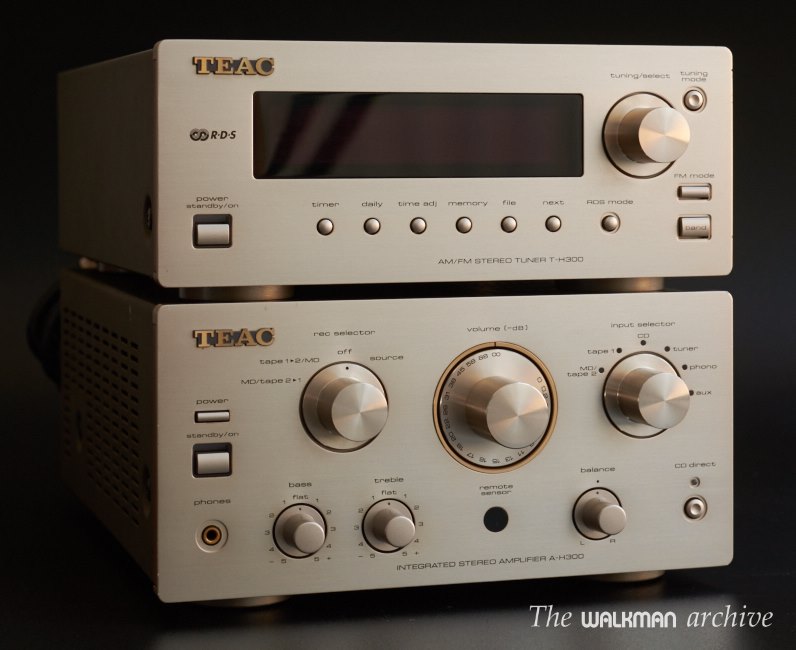
The TEAC A-H500, their best amplifier has the following specs:
- 50 + 50 Watt RMS at 8 Ohm, with THD (Total harmonic distortion) of 0,03%, which is a really good value. The A-H300 goes up to 0,5% (much higher distortion).
- For all sources the dynamic range is 95 dB, being pushed up to 100dB for ‘CD-direct’.
- The integrated phono amplifier achieves up to 67dB, which is good but not excellent.
- The frequency response goes from 5 Hz to 80 kHz which is far over what humankind needs 😉
- It has two integrated tone controls: bass (at 100Hz, a bit high to my taste) and treble (at 10 kHz).
The R-H500 deck is very good, but it only features two heads. It has this specs:
- Frequency response: 40 Hz – 15 kHz for chrome tapes, the one I use the most.
- W&F: 0,15% WRMS
- Dynamic range: 55 dB (w/o Dolby), 65 dB (Dolby B) and 75 dB (Dolby C).
It’s really good, but IMHO it lacks two things:
- An equalizer, or connections for using an external audio processor.
- A three-head deck
- A better phono preamplifier
And here comes the ONKYO Liverpool, which I think it’s the best mini HI-FI ever made. It has a beautiful aluminum front and it is composed by the A-911 amplifier series (or the newer 922) and the K-611 deck.
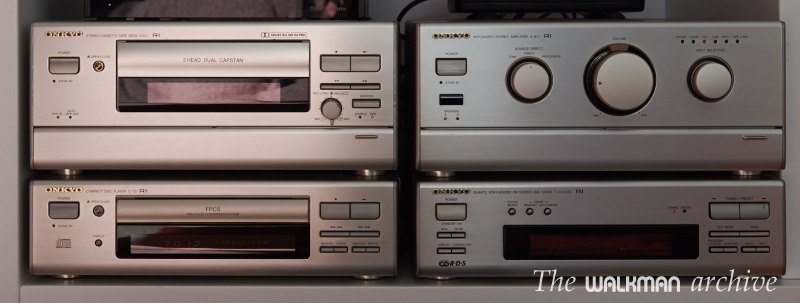
The A-911 has the common inputs, as well as a 2nd deck. It features a rec selector (independent from the monitor selector) and an external sound processor mode that let’s you pass the audio through an equalizer or whatever you want, which I find excellent.
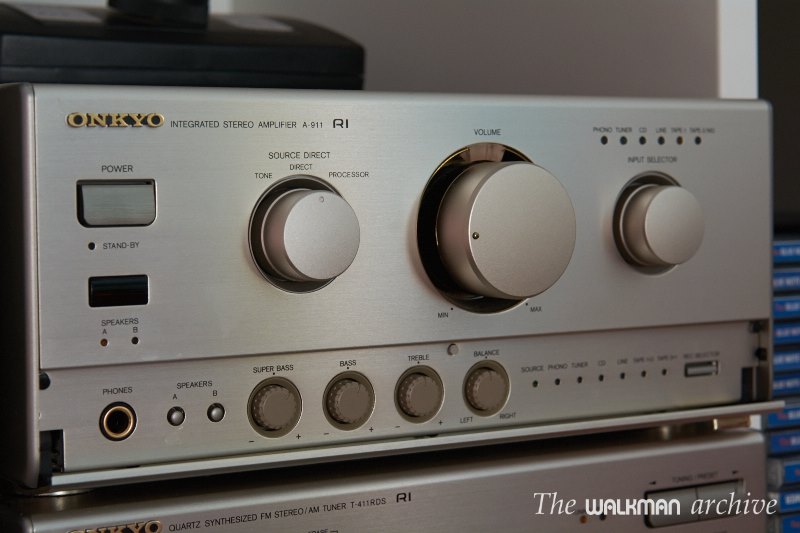
The A-911 amplifier has excellent features and sound. Although numbers doesn’t tell the whole story, it’s a good start point:
- 50 + 50 Watt RMS at 8 Ohm, with THD (Total harmonic distortion) of 0,06%, which is an excellent value.
- For all sources the dynamic range is 100dB.
- The integrated phono amplifier achieves up to 85 dB, which is excellent.
- The frequency response goes from 15 Hz to 30 kHz which is far over what humankind needs 😉
- It has three integrated tone controls: deep bass (at 55 Hz), bass (at 100 Hz) and treble (at 10 kHz).
The K-611 deck is probably the only one three-head deck in mini small factor. It features a 3-motor, close-loop dual capstan drive (something commonly found in high-end decks). Surprisingly, the loading mechanism is not a motorized bay as some similar others, but a standard one. This lets you clean the head and rollers normally, opposed as the front loading bay ones.
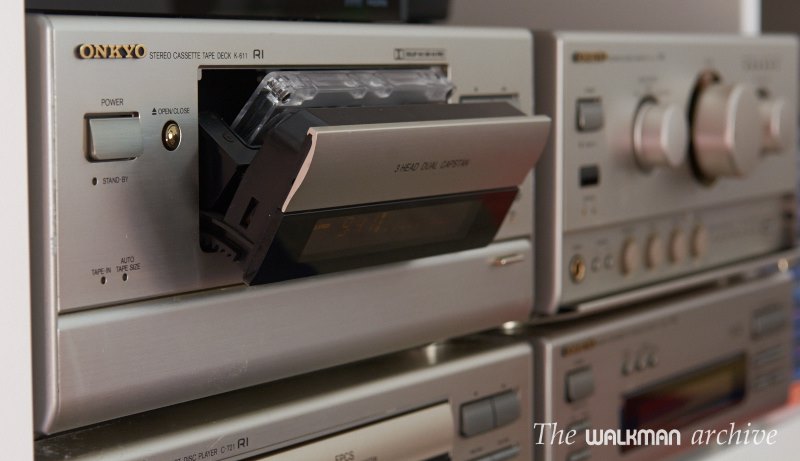
It has very nice features, like the source/tape switch (of course), the rec & balance level, VU meters, Dolby B-C-HX Pro and a few more.
These are the specs:
- Frequency response: 20 Hz – 18 kHz for chrome tapes, the one I use the most.
- W&F: 0,045% WRMS
- Dynamic range: 60 dB (w/o Dolby), 70 dB (Dolby B) and 80 dB (Dolby C).
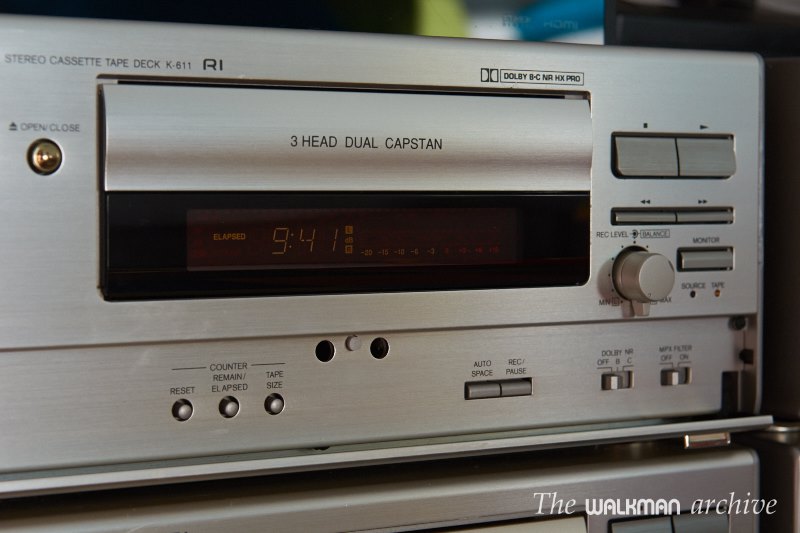
So, as you can see, the ONKYO wins over the TEAC in almost all features, except the THD of the amplifier. And I’m a very happy owner of one of those 🙂
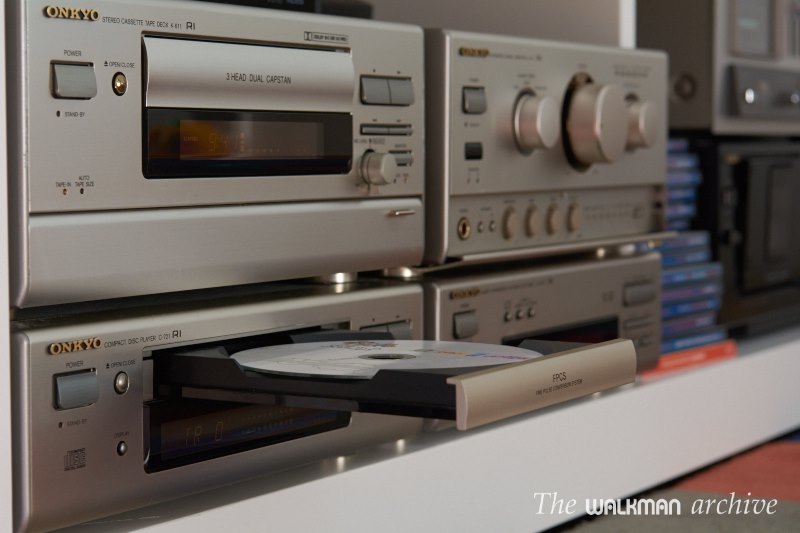
Tags: ONKYO
This entry was posted on Sunday, August 30th, 2015 at 9:31 am
You can follow any responses to this entry through the RSS 2.0 feed.
Leave a Reply
You must be logged in to post a comment.

